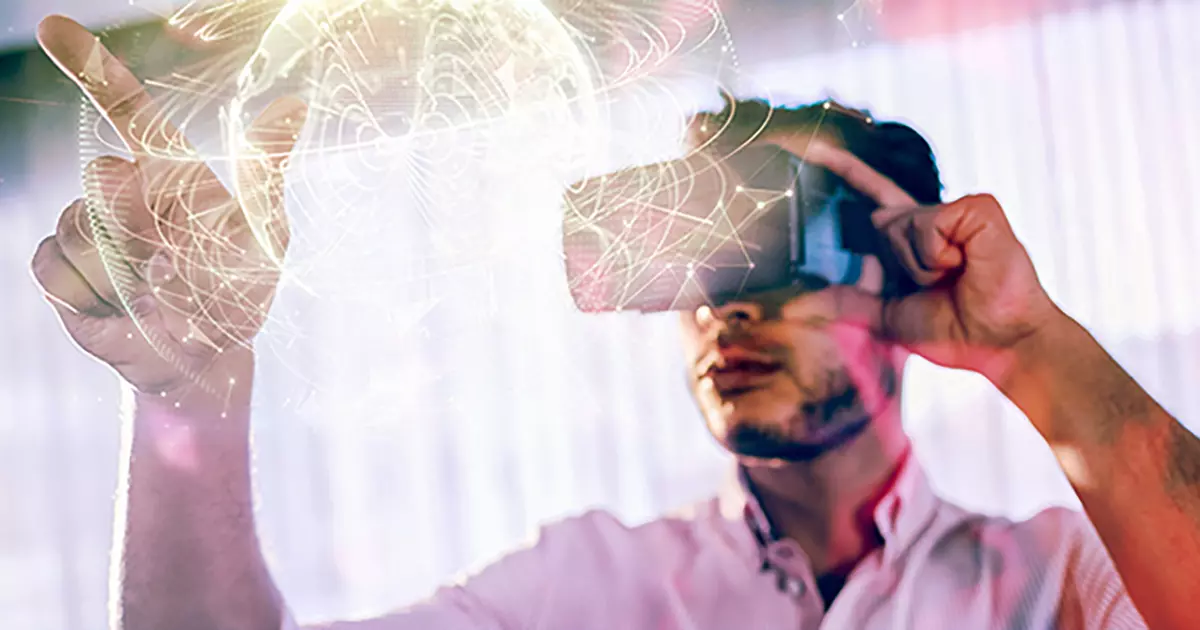Expanding Realities in B2B and Beyond (Part 2)

The future of B2B marketing is here and the old realities aren’t big enough to meet its needs. Take a look into the expanding realities of B2B and beyond.
In our last post, we examined how collective perceptions and beliefs help to shape a common reality. For thousands of years, that shared experience has been limited by two-dimensional thinking. Our ability to communicate our multi-dimensional human perception has fallen flat, limited to static surfaces and linear transmissions.
But that old reality is changing fast. The tools and tactics available to us today are re-shaping the way we think, share and communicate, thereby rebuilding the foundations of our very existence.
VIRTUAL REALITY
When The New York Times sent one million Google Cardboard headsets to subscribers at the end of 2015, they almost single handedly turned virtual reality (VR) into a widespread, commercially viable technology. Despite the fact that the quality of the experience and the capabilities of the device do not compare to higher-end headsets (e.g. Facebook’s Oculus Rift and Samsung Gear VR or the new Playstation® VR), Google Cardboard continues to make virtual reality accessible to a much wider segment of the population.
Here at Godfrey, we have leveraged this technology for several clients as part of a more immersive tradeshow experience. Whether it’s showcasing the natural benefits of rubber flooring in a variety of different landscapes or transporting the viewer 185 feet into the air in the world’s tallest boom lift, VR helps B2B companies bring audiences into their brand story like never before.
Instead of detailing your manufacturing processes on pre-printed backdrops or bringing every single one of your products to the next big tradeshow, now you can take your customers and prospect straight to the factory floor or jobsite…all from the comfort and safety of your booth.
MIXED REALITY
Though the possibilities of the VR experience continue to grow in exciting new directions, you don’t necessarily have to leave this reality behind in order to take advantage of new multi-dimensional technology for your B2B marketing plan.
Mixed reality (MR), for instance, enables the layering of digital input and displays between the viewer and his or her field of vision. Long predicted by a wide array of science fiction books and movies, MR has become a viable technology with a range of potential B2B applications. From communicating detailed product or process specs to creating more immersive hands-on demonstrations and presentations, MR can enhance both direct and remote interactions.
And while Google Glass may not have captured the imaginations of consumers (or marketers) as the search engine giant hoped, it did open the door for other manufacturers of mixed reality devices (like the Microsoft HoloLens) to begin exploring the possibilities of this new technology.
AUGMENTED REALITY
Of course, your customers don’t have to strap on an expensive headset or visor to harness the benefits of this increasingly blurred space between physical and digital experience. As the widespread success of Pokemon Go proved, the devices we carry with us are currently the most effective delivery method for this new hybrid reality.
Augmented reality (AR) has perhaps the most potential for effectively blending with more traditional marketing tactics. Using simple markers (e.g. an image on a brochure page) or more complex visual cues (e.g. a product on a store shelf or tradeshow booth) B2B marketers can create a virtually limitless range of 3D animations that interact with the images captured in real time by your smartphone or tablet camera. These animations can incorporate both text and image into a cohesive whole capable of supplementing, enhancing or even replacing the physical experience.
CLOSING THE PHYSICAL-DIGITAL DIVIDE
Each technology discussed above focuses on making digital experiences manifest in physical space. But there are also a number of new technologies focused on closing this gap in the opposite direction: making physical experiences manifest in the digital realm.
Wearable devices like Fitbit and Apple Watch are effectively digitizing our motions and motivations through constant pattern analysis and feedback. Gesture control technology is changing the way we interact with the digital realm. New conductive fibers have recently been developed that will make “smart” clothing a commercial reality in the not-too-distant future. Conductive ink has opened up the possibility of turning virtually any surface into a circuit.
As these new technologies continue to develop, as new materials are combined and discovered, as new data becomes available…the distance between physical and digital experiences will continue to shrink and our definitions of reality will continue to expand. The possibilities of B2B marketing will continue to expand as well. And together we will have an opportunity to drastically reshape the world we live in.
Sign Up for our Newsletter - Get agency updates, industry trends and valuable resources delivered directly to you.
Godfrey Team
Godfrey helps complex B2B industries tell their stories in ways that delight their customers.

